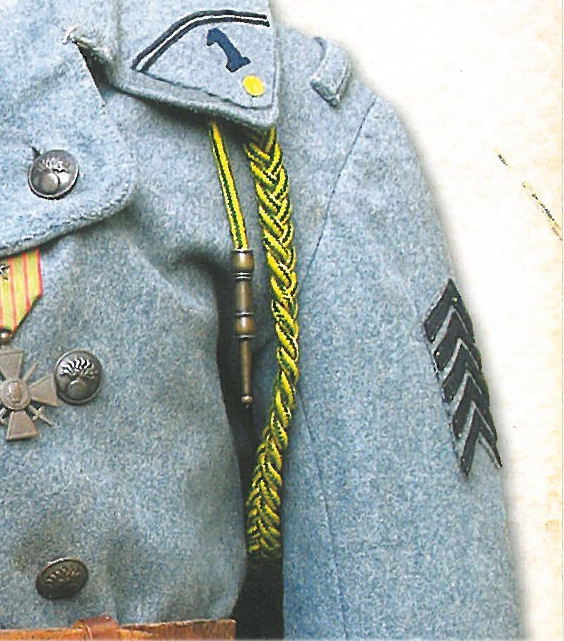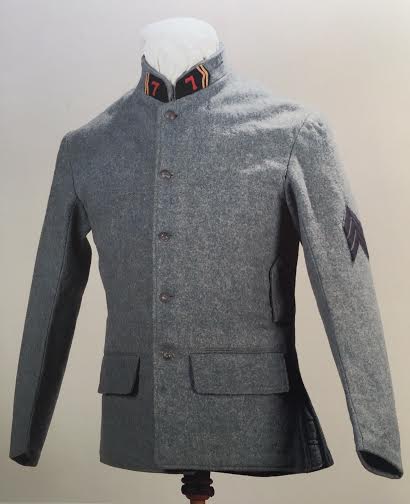Service Chevrons Program
Service Chevrons Incentive Program is intended to promote participation in living histories and unit work weekends, doing so in a way that will add to the authenticity of our impressions.
History
Created on 21 April 1916, the French army began distribution of chevrons to acknowledge the service of its front-line soldiers. Following a soldier’s first full-year of front-line service (i.e. service made in the "zone of the armies"), he was awarded his first chevron. Thereafter, a soldier was eligible for an additional stripe for every 6 months that he served at the front. Upon initial implementation, veterans in combat service since the war began (18 months) were awarded two chevrons.
The chevrons were in the shape of a reversed 'V'. There were two general "models" of chevron, both placed about 10 cm from the armhole seam (left arm). The first model was cut from dark blue wool cloth (wool felt) for enlistedmen. In theory, each stripe was 12 mm in width and 120 mm in length, and were sewn onto a light blue or horizon blue wool cloth backing. For NCOs and officers, the stripes were made of gold braid. However, on 11 August 1916 the order was revised and chevrons on any combat dress item was to be dark blue like those for the troops. From then on, gold braid chevrons were to be reserved only for dress or stepping-out uniforms.
The second model of chevron began distribution in July 1917 and gradually replaced the first type (as the larger stripes were taking up more space on the sleeve with each progressive chevron earned). Thus, the stripes were reduced to 8 mm in width to accommodate them. The length differed depending on the maker, though a width of approximately 2.5" seems to be the average. As with any symbolic military insignia of the time, private purchase service chevrons were also worn. These were generally smaller in dimension and were embroidered in dark blue wool or silk thread directly onto a light blue cloth backing. For NCOs and officers, gold or silver wire threading was available.
On a side note, in photographs from the period, the presence of a shorter, single stripe sewn below the bottom most chevron appears occasionally. Although a deviation from regulations, this demi-stripe represented a trimester spent at the front. This practice conformed closer to the reality of the life of a front-line combatant, where spending three months in the trenches was enough of an ordeal to be commended.
The chevrons were produced in long lengths, with the appropriate number cut off as the case required. The chevrons were typically sewn onto a cloth backing. Whenever a man earned an additional chevron, it he typically would receive a new badge with the accompanying number of stripes, though instances appear of supplementary single chevrons being sewn on directly below the bottom most chevron. By the fall of 1918, the soldiers who had managed to survive the entire war sported as many as 7 service chevrons on their sleeve.
Implementation for Reenacting
The maximum number of "years of service" a member can achieve is three (a total of 5 chevrons). The exception to this can be made on an individual basis by the unit commanders based on extraordinary years of service and merit.
A member is eligible to earn his first service chevron upon having attended:
1) 10 national GWA events (or at least 7 national GWA events combined with unit-sponsored events ); or
2) At least 7 national GWA events combined with unit-sponsored events and/or unit or company work-weekends.
(approximately 5 years of doing poilu)
A member is eligible to earn his second service chevron upon having attended:
1) 15 national GWA events (or at least 12 national GWA events combined with unit-sponsored events); or
2) At least 10 national GWA events combined with unit-sponsored events and/or unit or company work-weekends.
(approximately 8 years of doing poilu)
Thereafter, a member is eligible to earn an additional service chevron (up to 5 in total):
1) every 5 additional GWA or unit-sponsored events attended; or
2) every 4 additional GWA or unit-sponsored events attended, plus 1 unit or company work-weekend attended.
Thus, the third chevron would be earned after approximately 10-11 years of doing poilu; the fourth chevron, approximately 12-13 years of doing poilu; and the fifth chevron, 14-15 years. The above described system is also retrograded in order to recognize past Great War reenacting experience.
From left to right: an early pattern (12mm wide) regulation service chevrons for enlistedmen followed by two late pattern (8mm wide) regulation service chevrons; a private purchase braid set for enlisted; and a private purchase embroidered set for enlisted.
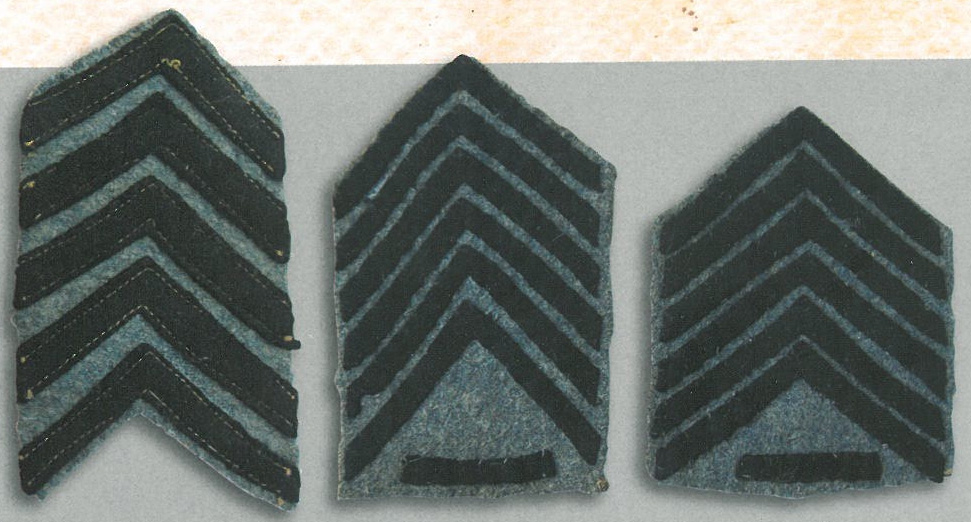

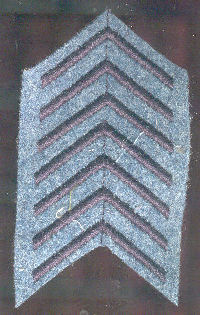
From left to right: NCO service chevrons in gold braid; NCO embroidered chevrons in gold metallic thread; officer chevrons in lézard braid.
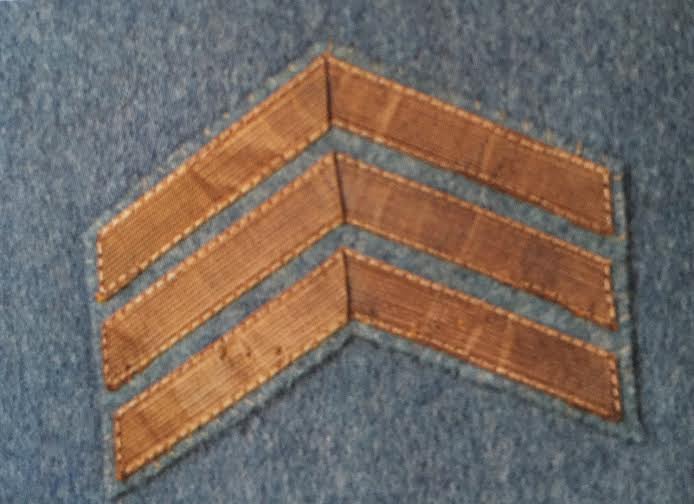

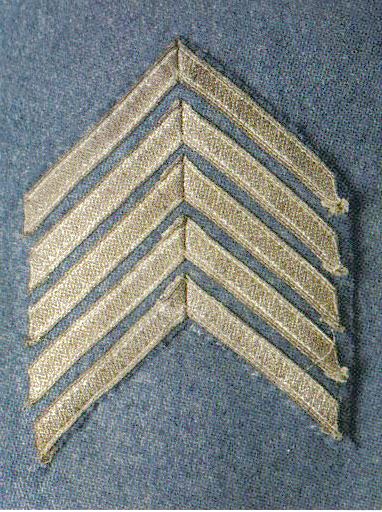
Enlisted greatcoat and jacket showing placement of service chevrons.
